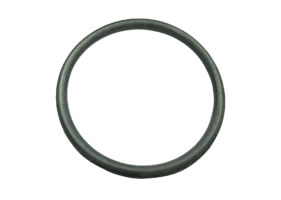
O-rings play an important role in the aerospace manufacturing industry. Also known as toric joints — a reference to their circular torus shape — they are designed to seal the spaces around hoses and other parts. Connection points for hoses are susceptible to leaks. As the fluid or gas flowing through a hose becomes pressurized, it may leak from a connection point. O-rings, however, can seal spaces such as this to protect against leaks.
#1) Commercial Airliners Contain Thousands of O-Rings
While the exact number varies, most commercial airliners contain thousands of O-rings. They are commonly used around oil and fuel lines. Oil and fuel lines, of course, are pressurized. Therefore, they require mechanical seals around connection points, with O-rings being the most common type of mechanical seal used for this purpose.
#2) Rated for Up to 3,000 PSI
Even when exposed to highly pressurized fluid or gas, high-quality O-rings won’t leak. After all, they are designed specifically to withstand pressurized fluid or gas. Some O-rings, in fact, are rated for up to 3,000 pounds per square inch (PSI) of pressure.
#3) Available in Dozens of Materials
You can find O-rings in different materials. Most of the materials in which O-rings are made feature a high level of elasticity. With their elastic properties, they will expand when exposed to hot, pressurized fluid or gas, thereby preventing leaks.
Common materials in which O-rings are made include:
- Polytetrafluoroethylene (PTFE)
- Ethylene Propylene Diene Terpolymer (EPDM
- Perfluoroelastomer (FFKM)
- TFE Propylene (Aflas) TetrafluoroethylenePropylene Rubbers
- Polysulfide rubber (PSR)
- Butadiene rubber (BR)
- Butyl rubber (IIR)
- Nitrile rubber (NR)
- Ethylene propylene rubber (EPR)
#4) Two O-Rings May Be Used in the Same Space
It’s not uncommon for two O-rings to be used in the same space. For sealing applications involving 800 PSI or higher, for example, two O-rings may be used. There’s a primary O-ring, and a secondary or “backup” O-ring. The backup O-ring acts as a failsafe. If the primary O-ring begins to leak, the backup O-ring will provide the necessary sealing.
#5) Measured in ID and CS Sizes
When shopping for O-rings, you’ll need to consider the inner diameter (ID) and cross-section (CS). The ID refers to the length from the widest point of the inside of an O-ring to the opposite side. The CS, in comparison, represents the thickness of an O-ring. You can refer to the ID and CS to determine the size of an O-ring and whether it will fit your intended application.



